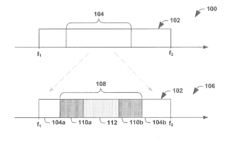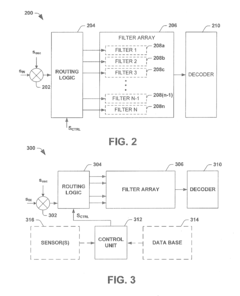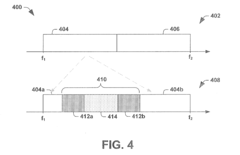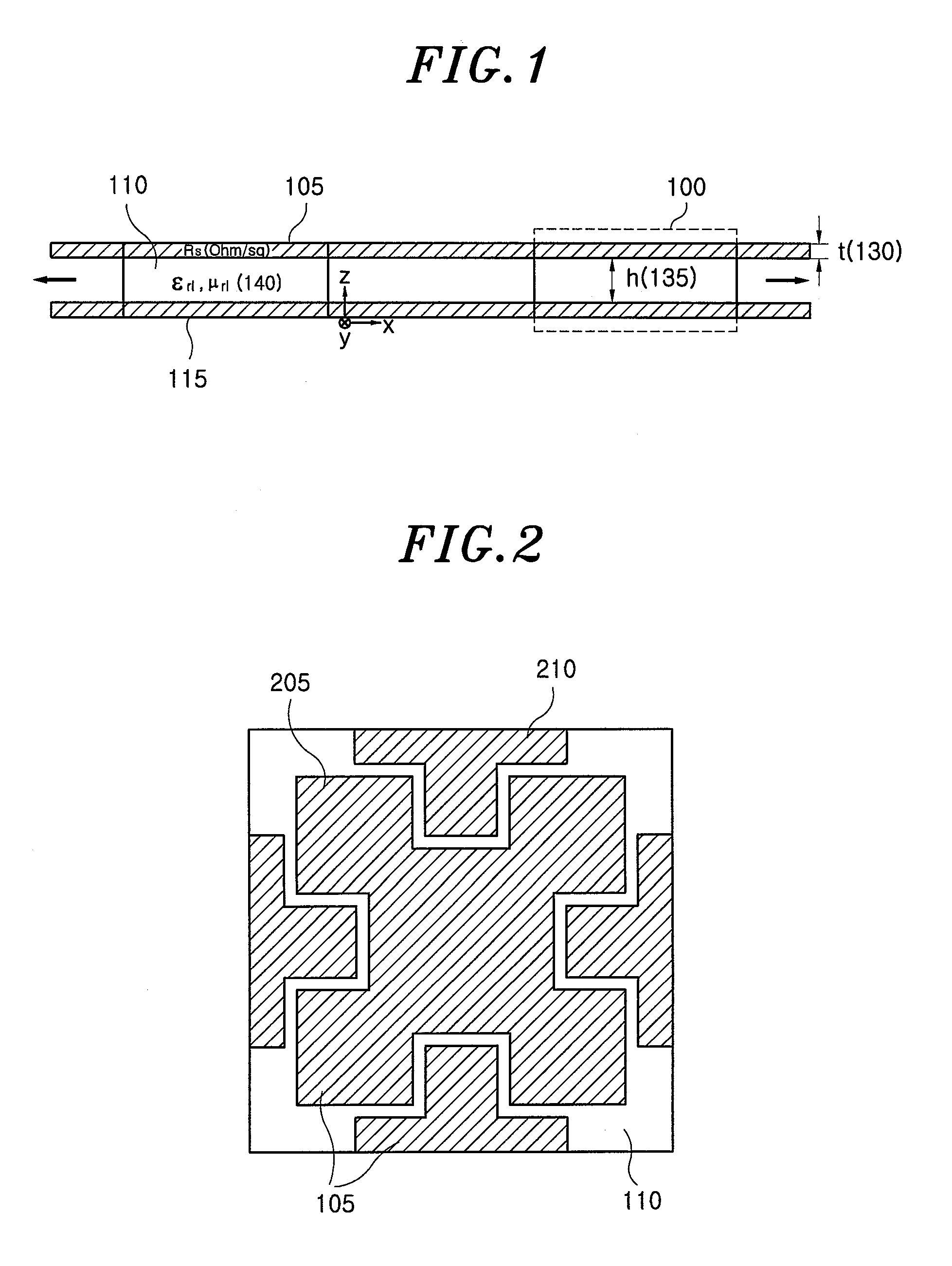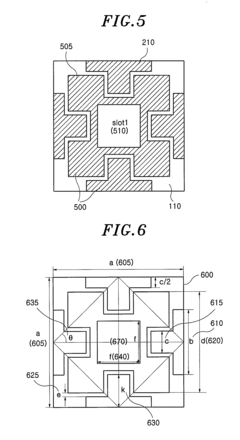How Electromagnetic Waves Impact Global Communication Systems?
JUL 11, 20259 MIN READ
Generate Your Research Report Instantly with AI Agent
Patsnap Eureka helps you evaluate technical feasibility & market potential.
EM Wave Fundamentals
Electromagnetic waves are oscillations of electric and magnetic fields that propagate through space, carrying energy and information. These waves form the foundation of modern global communication systems, enabling the transmission of data across vast distances with remarkable speed and efficiency. The fundamental properties of electromagnetic waves, including frequency, wavelength, amplitude, and polarization, play crucial roles in determining their behavior and applications in communication technologies.
The electromagnetic spectrum encompasses a wide range of frequencies, from low-frequency radio waves to high-frequency gamma rays. In the context of global communication systems, the most relevant portions of the spectrum include radio waves, microwaves, and infrared radiation. Each of these frequency bands offers unique characteristics that make them suitable for different communication applications.
Radio waves, with frequencies ranging from 3 kHz to 300 GHz, are extensively used in various communication technologies. They can travel long distances and penetrate obstacles, making them ideal for broadcasting, mobile communications, and satellite communications. The ability of radio waves to refract in the ionosphere allows for long-distance communication by bouncing signals off the upper atmosphere.
Microwaves, occupying the higher frequency range of radio waves (300 MHz to 300 GHz), are particularly important for point-to-point communication links, satellite communications, and cellular networks. Their shorter wavelengths allow for more focused beams and higher data transmission rates, essential for modern high-speed communication systems.
The propagation of electromagnetic waves through different media is governed by Maxwell's equations, which describe the relationships between electric and magnetic fields. These equations form the theoretical basis for understanding wave behavior in various environments, including free space, atmosphere, and different materials used in communication devices.
Attenuation, refraction, reflection, and diffraction are key phenomena that affect the transmission of electromagnetic waves in communication systems. Attenuation causes signal strength to decrease over distance, while refraction can bend waves as they pass through different media. Reflection and diffraction allow waves to navigate around obstacles or propagate beyond the line of sight, extending the reach of communication networks.
The polarization of electromagnetic waves, which describes the orientation of their electric field oscillations, is another critical factor in communication system design. Proper alignment of transmitting and receiving antennas based on wave polarization is essential for maximizing signal strength and minimizing interference.
Understanding these fundamental properties and behaviors of electromagnetic waves is crucial for designing and optimizing global communication systems. It enables engineers to select appropriate frequencies for specific applications, develop effective antenna designs, and implement signal processing techniques to overcome propagation challenges and improve communication quality and reliability.
The electromagnetic spectrum encompasses a wide range of frequencies, from low-frequency radio waves to high-frequency gamma rays. In the context of global communication systems, the most relevant portions of the spectrum include radio waves, microwaves, and infrared radiation. Each of these frequency bands offers unique characteristics that make them suitable for different communication applications.
Radio waves, with frequencies ranging from 3 kHz to 300 GHz, are extensively used in various communication technologies. They can travel long distances and penetrate obstacles, making them ideal for broadcasting, mobile communications, and satellite communications. The ability of radio waves to refract in the ionosphere allows for long-distance communication by bouncing signals off the upper atmosphere.
Microwaves, occupying the higher frequency range of radio waves (300 MHz to 300 GHz), are particularly important for point-to-point communication links, satellite communications, and cellular networks. Their shorter wavelengths allow for more focused beams and higher data transmission rates, essential for modern high-speed communication systems.
The propagation of electromagnetic waves through different media is governed by Maxwell's equations, which describe the relationships between electric and magnetic fields. These equations form the theoretical basis for understanding wave behavior in various environments, including free space, atmosphere, and different materials used in communication devices.
Attenuation, refraction, reflection, and diffraction are key phenomena that affect the transmission of electromagnetic waves in communication systems. Attenuation causes signal strength to decrease over distance, while refraction can bend waves as they pass through different media. Reflection and diffraction allow waves to navigate around obstacles or propagate beyond the line of sight, extending the reach of communication networks.
The polarization of electromagnetic waves, which describes the orientation of their electric field oscillations, is another critical factor in communication system design. Proper alignment of transmitting and receiving antennas based on wave polarization is essential for maximizing signal strength and minimizing interference.
Understanding these fundamental properties and behaviors of electromagnetic waves is crucial for designing and optimizing global communication systems. It enables engineers to select appropriate frequencies for specific applications, develop effective antenna designs, and implement signal processing techniques to overcome propagation challenges and improve communication quality and reliability.
Global Comm Demand
The global demand for communication systems has experienced exponential growth in recent years, driven by the increasing interconnectedness of our world and the rapid advancement of digital technologies. This surge in demand is primarily fueled by the proliferation of mobile devices, the expansion of internet services, and the emergence of new technologies such as 5G and the Internet of Things (IoT).
The telecommunications industry has witnessed a significant shift in consumer behavior, with a growing preference for mobile and wireless communication over traditional fixed-line services. This trend has led to a substantial increase in the demand for mobile data services, with global mobile data traffic projected to grow at a compound annual growth rate (CAGR) of over 30% in the coming years.
The business sector has also contributed significantly to the rising demand for communication systems. As companies increasingly adopt cloud computing, big data analytics, and artificial intelligence, the need for robust and reliable communication infrastructure has become paramount. This has led to a surge in demand for high-speed broadband connections and advanced networking solutions.
Emerging markets have played a crucial role in driving the global demand for communication systems. Countries with large populations and rapidly developing economies, such as India and China, have seen a dramatic increase in mobile phone adoption and internet penetration. This has created vast new markets for telecommunication services and equipment manufacturers.
The COVID-19 pandemic has further accelerated the demand for communication systems, as remote work, online education, and digital entertainment have become integral parts of daily life for millions of people worldwide. This sudden shift has highlighted the importance of reliable and high-capacity communication networks, leading to increased investments in infrastructure upgrades and expansion.
The Internet of Things (IoT) has emerged as a major driver of demand for communication systems. As more devices become connected, from smart home appliances to industrial sensors, the need for robust and efficient communication networks continues to grow. This trend is expected to accelerate with the widespread adoption of 5G technology, which promises to enable a new era of connected devices and applications.
Looking ahead, the demand for communication systems is expected to continue its upward trajectory. The rollout of 5G networks, the increasing adoption of artificial intelligence and machine learning, and the growing importance of cybersecurity are all factors that will shape the future of global communication systems. As these technologies evolve and mature, they will create new opportunities and challenges for the telecommunications industry, driving further innovation and investment in communication infrastructure.
The telecommunications industry has witnessed a significant shift in consumer behavior, with a growing preference for mobile and wireless communication over traditional fixed-line services. This trend has led to a substantial increase in the demand for mobile data services, with global mobile data traffic projected to grow at a compound annual growth rate (CAGR) of over 30% in the coming years.
The business sector has also contributed significantly to the rising demand for communication systems. As companies increasingly adopt cloud computing, big data analytics, and artificial intelligence, the need for robust and reliable communication infrastructure has become paramount. This has led to a surge in demand for high-speed broadband connections and advanced networking solutions.
Emerging markets have played a crucial role in driving the global demand for communication systems. Countries with large populations and rapidly developing economies, such as India and China, have seen a dramatic increase in mobile phone adoption and internet penetration. This has created vast new markets for telecommunication services and equipment manufacturers.
The COVID-19 pandemic has further accelerated the demand for communication systems, as remote work, online education, and digital entertainment have become integral parts of daily life for millions of people worldwide. This sudden shift has highlighted the importance of reliable and high-capacity communication networks, leading to increased investments in infrastructure upgrades and expansion.
The Internet of Things (IoT) has emerged as a major driver of demand for communication systems. As more devices become connected, from smart home appliances to industrial sensors, the need for robust and efficient communication networks continues to grow. This trend is expected to accelerate with the widespread adoption of 5G technology, which promises to enable a new era of connected devices and applications.
Looking ahead, the demand for communication systems is expected to continue its upward trajectory. The rollout of 5G networks, the increasing adoption of artificial intelligence and machine learning, and the growing importance of cybersecurity are all factors that will shape the future of global communication systems. As these technologies evolve and mature, they will create new opportunities and challenges for the telecommunications industry, driving further innovation and investment in communication infrastructure.
EM Challenges in Comms
Electromagnetic waves play a crucial role in global communication systems, enabling the transmission of information across vast distances. However, these systems face numerous challenges related to the behavior and characteristics of electromagnetic waves. One of the primary challenges is signal attenuation, which occurs as electromagnetic waves travel through various media, including the atmosphere, buildings, and natural obstacles. This attenuation can significantly reduce signal strength and quality, particularly over long distances or in urban environments.
Another major challenge is interference, both from natural sources and human-made devices. Solar flares, lightning, and other atmospheric phenomena can disrupt electromagnetic signals, while the increasing number of wireless devices and networks contributes to a crowded electromagnetic spectrum. This interference can lead to signal degradation, data loss, and reduced communication reliability.
Multipath propagation presents an additional challenge for communication systems. As electromagnetic waves bounce off various surfaces, they can arrive at the receiver at different times and from different directions. This can cause signal distortion and intersymbol interference, particularly in high-speed digital communications.
The limited bandwidth of the electromagnetic spectrum poses a significant constraint on global communication systems. As demand for wireless services continues to grow, the available frequency bands become increasingly congested, leading to competition for spectrum allocation and the need for more efficient modulation and multiplexing techniques.
Electromagnetic compatibility (EMC) is another critical challenge, as the proliferation of electronic devices and communication systems can lead to unintended electromagnetic interactions. Ensuring that different systems can coexist without causing harmful interference to one another requires careful design and regulatory compliance.
The impact of the ionosphere on long-distance communications presents both opportunities and challenges. While the ionosphere can facilitate long-range propagation of certain frequencies, it is also subject to variations due to solar activity and time of day, which can affect signal reliability and performance.
Addressing these challenges requires ongoing research and innovation in areas such as advanced signal processing, adaptive antenna systems, and cognitive radio technologies. The development of more robust modulation schemes, error correction techniques, and spectrum-sharing algorithms is essential for improving the resilience and efficiency of global communication systems in the face of electromagnetic wave challenges.
Another major challenge is interference, both from natural sources and human-made devices. Solar flares, lightning, and other atmospheric phenomena can disrupt electromagnetic signals, while the increasing number of wireless devices and networks contributes to a crowded electromagnetic spectrum. This interference can lead to signal degradation, data loss, and reduced communication reliability.
Multipath propagation presents an additional challenge for communication systems. As electromagnetic waves bounce off various surfaces, they can arrive at the receiver at different times and from different directions. This can cause signal distortion and intersymbol interference, particularly in high-speed digital communications.
The limited bandwidth of the electromagnetic spectrum poses a significant constraint on global communication systems. As demand for wireless services continues to grow, the available frequency bands become increasingly congested, leading to competition for spectrum allocation and the need for more efficient modulation and multiplexing techniques.
Electromagnetic compatibility (EMC) is another critical challenge, as the proliferation of electronic devices and communication systems can lead to unintended electromagnetic interactions. Ensuring that different systems can coexist without causing harmful interference to one another requires careful design and regulatory compliance.
The impact of the ionosphere on long-distance communications presents both opportunities and challenges. While the ionosphere can facilitate long-range propagation of certain frequencies, it is also subject to variations due to solar activity and time of day, which can affect signal reliability and performance.
Addressing these challenges requires ongoing research and innovation in areas such as advanced signal processing, adaptive antenna systems, and cognitive radio technologies. The development of more robust modulation schemes, error correction techniques, and spectrum-sharing algorithms is essential for improving the resilience and efficiency of global communication systems in the face of electromagnetic wave challenges.
Current EM Solutions
01 Electromagnetic shielding materials
Development of materials that can effectively block or absorb electromagnetic waves, used in various applications to protect sensitive equipment or reduce electromagnetic interference. These materials often incorporate conductive or magnetic particles to enhance their shielding properties.- Electromagnetic shielding materials and structures: Various materials and structures are developed to shield against electromagnetic waves. These include composite materials, conductive fabrics, and specialized coatings that can absorb or reflect electromagnetic radiation. Such shielding solutions are crucial in protecting sensitive electronic equipment and reducing electromagnetic interference in various applications.
- Electromagnetic wave detection and measurement: Advanced techniques and devices are employed for detecting and measuring electromagnetic waves. These include sensors, antennas, and signal processing systems that can accurately quantify electromagnetic field strength, frequency, and other characteristics. Such technologies are essential for monitoring electromagnetic environments and ensuring compliance with safety standards.
- Electromagnetic compatibility in electronic devices: Strategies are implemented to ensure electromagnetic compatibility in electronic devices. This involves designing circuits and components that minimize electromagnetic emissions and are resistant to external electromagnetic interference. Techniques such as proper grounding, shielding, and filtering are employed to enhance device performance and reliability in the presence of electromagnetic waves.
- Electromagnetic wave applications in communication: Electromagnetic waves are harnessed for various communication applications. This includes the development of advanced antenna designs, signal modulation techniques, and transmission systems that optimize the use of the electromagnetic spectrum. These technologies enable efficient wireless communication, improved data transfer rates, and enhanced connectivity across different platforms.
- Biological effects of electromagnetic waves: Research is conducted to understand the biological impacts of electromagnetic waves on living organisms. This includes studies on potential health effects, cellular responses to electromagnetic exposure, and the development of safety guidelines. The findings contribute to the establishment of exposure limits and inform the design of protective measures in various environments where electromagnetic fields are present.
02 Electromagnetic wave detection and measurement
Advancements in sensors and systems for detecting, measuring, and analyzing electromagnetic waves across different frequencies. These technologies are crucial for various applications, including telecommunications, environmental monitoring, and scientific research.Expand Specific Solutions03 Electromagnetic wave-based communication systems
Innovations in communication technologies that utilize electromagnetic waves for data transmission. This includes improvements in antenna designs, signal processing techniques, and modulation methods to enhance communication efficiency and reliability.Expand Specific Solutions04 Electromagnetic compatibility (EMC) solutions
Development of techniques and devices to ensure electronic equipment can function without interfering with other devices and without being affected by external electromagnetic fields. This includes design strategies for circuit boards, enclosures, and filtering systems.Expand Specific Solutions05 Electromagnetic wave applications in medical field
Utilization of electromagnetic waves in medical diagnostics, therapy, and imaging. This includes technologies such as MRI, electromagnetic hyperthermia for cancer treatment, and non-invasive monitoring devices that leverage electromagnetic properties of biological tissues.Expand Specific Solutions
Key Telecom Players
The electromagnetic wave technology for global communication systems is in a mature stage, with a large and established market. The industry is characterized by intense competition among major players like Huawei, LG Electronics, and Sony, who are continuously innovating to improve performance and efficiency. These companies, along with research institutions like ETRI and universities such as Tokyo Institute of Technology, are driving advancements in areas like 5G, satellite communications, and IoT connectivity. The market size is substantial, with global telecommunications infrastructure investments reaching hundreds of billions annually. While the core technology is well-established, ongoing research focuses on enhancing speed, reliability, and energy efficiency of communication systems.
Huawei Technologies Co., Ltd.
Technical Solution: Huawei has developed advanced 5G technologies that significantly impact global communication systems. Their 5G base stations utilize Massive MIMO (Multiple-Input Multiple-Output) technology, which employs hundreds of antennas to focus energy, improving spectrum efficiency and reducing electromagnetic interference[1]. Huawei's 5G equipment incorporates AI-driven beamforming techniques, allowing for dynamic adjustment of electromagnetic wave patterns to optimize signal strength and coverage[2]. The company has also pioneered the use of full-duplex technology in their 5G systems, enabling simultaneous transmission and reception on the same frequency, effectively doubling spectral efficiency[3].
Strengths: Industry-leading 5G technology, high spectral efficiency, reduced electromagnetic interference. Weaknesses: Geopolitical concerns affecting global market access, potential security scrutiny in some countries.
LG Electronics, Inc.
Technical Solution: LG Electronics has made significant strides in electromagnetic wave management for global communication systems. Their ThinQ AI platform integrates with their communication devices to optimize signal processing and reduce electromagnetic interference[4]. LG has developed advanced MIMO technologies for their mobile devices and network equipment, enhancing data transmission rates while minimizing energy consumption[5]. The company's research into metamaterials has led to the creation of novel antennas that can manipulate electromagnetic waves more efficiently, potentially revolutionizing wireless communication[6].
Strengths: Strong consumer electronics presence, innovative AI integration in communication devices. Weaknesses: Less prominent in network infrastructure compared to some competitors.
EM Wave Innovations
LTE Operation in White Spaces
PatentActiveUS20120184283A1
Innovation
- A method and apparatus for efficiently reassigning secondary communication channels to unused portions of white spaces by reconfiguring them into non-contiguous or reduced bandwidth channels, using a frequency reassignment circuit with a filter array and control unit to selectively route signals and avoid primary user frequencies, allowing continuous data transmission.
Electromagnetic wave absorber using resistive material
PatentInactiveUS20090284404A1
Innovation
- An electromagnetic wave absorber using an Electromagnetic BandGap (EBG) structure with periodically arranged unit cells, comprising a metal conductive ground layer, a dielectric layer, and a resistive unit cell pattern featuring fundamental and half cross dipole patches with varying surface resistance values, allowing for adjustable thickness and easy adjustment of absorbing frequency bands and characteristics.
Spectrum Regulations
Spectrum regulations play a crucial role in managing the impact of electromagnetic waves on global communication systems. These regulations are established by national and international bodies to ensure efficient and interference-free use of the radio frequency spectrum. The International Telecommunication Union (ITU) serves as the primary global authority for spectrum allocation and management, coordinating efforts across nations to harmonize spectrum usage.
National regulatory bodies, such as the Federal Communications Commission (FCC) in the United States and Ofcom in the United Kingdom, implement and enforce spectrum regulations within their respective jurisdictions. These agencies are responsible for allocating frequency bands, issuing licenses, and monitoring compliance with established rules and standards.
Spectrum regulations address various aspects of electromagnetic wave usage in communication systems. They define frequency band allocations for different services, including mobile communications, broadcasting, satellite communications, and emerging technologies like 5G and IoT. These allocations aim to prevent interference between different services and optimize spectrum utilization.
Power limits and emission standards are key components of spectrum regulations. They specify the maximum transmit power levels and out-of-band emissions allowed for different types of communication equipment. These restrictions help minimize interference between adjacent frequency bands and reduce the potential for harmful radiation.
Spectrum licensing frameworks are established to govern the use of specific frequency bands. Licensing models may include exclusive licenses, shared access, and unlicensed bands. Each approach has implications for market competition, innovation, and spectrum efficiency. Regulators must balance these factors to promote technological advancement while ensuring fair access to spectrum resources.
International coordination is essential in spectrum regulation, particularly for services that cross national borders. Satellite communications and global mobile roaming require harmonized spectrum allocations and technical standards across multiple countries. The World Radiocommunication Conference (WRC), held periodically by the ITU, serves as a forum for nations to negotiate and update international spectrum regulations.
As technology evolves, spectrum regulations must adapt to accommodate new communication paradigms. The emergence of dynamic spectrum access techniques, cognitive radio systems, and software-defined radios presents both opportunities and challenges for regulators. These technologies promise more efficient spectrum utilization but require careful consideration of interference mitigation and coexistence with legacy systems.
Spectrum regulations also address public safety and emergency communications. Dedicated frequency bands are allocated for first responders and disaster relief efforts, ensuring reliable communication during critical situations. Additionally, regulations may mandate specific features in communication devices, such as emergency alert capabilities, to enhance public safety.
National regulatory bodies, such as the Federal Communications Commission (FCC) in the United States and Ofcom in the United Kingdom, implement and enforce spectrum regulations within their respective jurisdictions. These agencies are responsible for allocating frequency bands, issuing licenses, and monitoring compliance with established rules and standards.
Spectrum regulations address various aspects of electromagnetic wave usage in communication systems. They define frequency band allocations for different services, including mobile communications, broadcasting, satellite communications, and emerging technologies like 5G and IoT. These allocations aim to prevent interference between different services and optimize spectrum utilization.
Power limits and emission standards are key components of spectrum regulations. They specify the maximum transmit power levels and out-of-band emissions allowed for different types of communication equipment. These restrictions help minimize interference between adjacent frequency bands and reduce the potential for harmful radiation.
Spectrum licensing frameworks are established to govern the use of specific frequency bands. Licensing models may include exclusive licenses, shared access, and unlicensed bands. Each approach has implications for market competition, innovation, and spectrum efficiency. Regulators must balance these factors to promote technological advancement while ensuring fair access to spectrum resources.
International coordination is essential in spectrum regulation, particularly for services that cross national borders. Satellite communications and global mobile roaming require harmonized spectrum allocations and technical standards across multiple countries. The World Radiocommunication Conference (WRC), held periodically by the ITU, serves as a forum for nations to negotiate and update international spectrum regulations.
As technology evolves, spectrum regulations must adapt to accommodate new communication paradigms. The emergence of dynamic spectrum access techniques, cognitive radio systems, and software-defined radios presents both opportunities and challenges for regulators. These technologies promise more efficient spectrum utilization but require careful consideration of interference mitigation and coexistence with legacy systems.
Spectrum regulations also address public safety and emergency communications. Dedicated frequency bands are allocated for first responders and disaster relief efforts, ensuring reliable communication during critical situations. Additionally, regulations may mandate specific features in communication devices, such as emergency alert capabilities, to enhance public safety.
EM Health Impacts
The impact of electromagnetic waves on human health has been a subject of ongoing research and debate in the scientific community. While electromagnetic waves are essential for global communication systems, their potential health effects have raised concerns among the public and health professionals.
Electromagnetic waves, particularly those in the radiofrequency (RF) range used in wireless communications, have been studied extensively for their potential biological effects. The primary mechanism of interaction between RF waves and living tissues is through heating. This thermal effect is well-understood and forms the basis for safety guidelines established by international organizations such as the International Commission on Non-Ionizing Radiation Protection (ICNIRP).
However, some studies have suggested the possibility of non-thermal effects, even at exposure levels below current safety limits. These potential effects include changes in cellular function, DNA damage, and alterations in brain activity. While many of these studies have been conducted in laboratory settings or on animals, their relevance to human health in real-world exposure scenarios remains uncertain.
Epidemiological studies have investigated potential links between long-term exposure to electromagnetic fields from mobile phones and various health outcomes, including cancer. While some studies have reported associations, the overall evidence has not conclusively demonstrated a causal relationship between RF exposure from communication systems and adverse health effects.
The rapid evolution of communication technologies, such as the deployment of 5G networks, has introduced new frequencies and exposure patterns. This has led to renewed interest in assessing potential health impacts. Current research is focusing on the effects of millimeter waves used in 5G systems, as well as the cumulative impact of exposure to multiple sources of electromagnetic radiation in our increasingly connected world.
Public perception and concern about the health impacts of electromagnetic waves have influenced policy decisions and industry practices. Some countries have adopted more stringent exposure limits than those recommended by international guidelines, while others have implemented precautionary measures such as limiting Wi-Fi in schools or requiring warning labels on mobile devices.
As global communication systems continue to expand and evolve, ongoing research and monitoring of potential health effects remain crucial. Future studies will need to address the long-term effects of chronic low-level exposure, potential vulnerabilities in specific populations, and the combined effects of different types of electromagnetic radiation. Balancing the undeniable benefits of global communication technologies with potential health risks will be an ongoing challenge for policymakers, industry leaders, and health professionals.
Electromagnetic waves, particularly those in the radiofrequency (RF) range used in wireless communications, have been studied extensively for their potential biological effects. The primary mechanism of interaction between RF waves and living tissues is through heating. This thermal effect is well-understood and forms the basis for safety guidelines established by international organizations such as the International Commission on Non-Ionizing Radiation Protection (ICNIRP).
However, some studies have suggested the possibility of non-thermal effects, even at exposure levels below current safety limits. These potential effects include changes in cellular function, DNA damage, and alterations in brain activity. While many of these studies have been conducted in laboratory settings or on animals, their relevance to human health in real-world exposure scenarios remains uncertain.
Epidemiological studies have investigated potential links between long-term exposure to electromagnetic fields from mobile phones and various health outcomes, including cancer. While some studies have reported associations, the overall evidence has not conclusively demonstrated a causal relationship between RF exposure from communication systems and adverse health effects.
The rapid evolution of communication technologies, such as the deployment of 5G networks, has introduced new frequencies and exposure patterns. This has led to renewed interest in assessing potential health impacts. Current research is focusing on the effects of millimeter waves used in 5G systems, as well as the cumulative impact of exposure to multiple sources of electromagnetic radiation in our increasingly connected world.
Public perception and concern about the health impacts of electromagnetic waves have influenced policy decisions and industry practices. Some countries have adopted more stringent exposure limits than those recommended by international guidelines, while others have implemented precautionary measures such as limiting Wi-Fi in schools or requiring warning labels on mobile devices.
As global communication systems continue to expand and evolve, ongoing research and monitoring of potential health effects remain crucial. Future studies will need to address the long-term effects of chronic low-level exposure, potential vulnerabilities in specific populations, and the combined effects of different types of electromagnetic radiation. Balancing the undeniable benefits of global communication technologies with potential health risks will be an ongoing challenge for policymakers, industry leaders, and health professionals.
Unlock deeper insights with Patsnap Eureka Quick Research — get a full tech report to explore trends and direct your research. Try now!
Generate Your Research Report Instantly with AI Agent
Supercharge your innovation with Patsnap Eureka AI Agent Platform!
